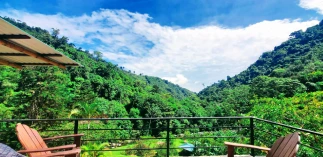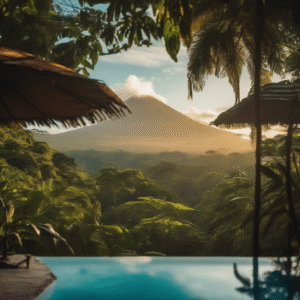Here at the Costa Rican Retreat, nestled amidst the emerald embrace of the mountains, we dedicate ourselves not just to your physical rejuvenation but also to enriching your connection with the vibrant tapestry of life that surrounds us. Today, we turn our spotlight to a rather secretive resident of Costa Rican wetlands, the Yellow-crowned Night-Heron (Nyctanassa violacea).
A Master of Disguise
Unlike its flamboyant relative, the Green Heron, the Yellow-crowned Night-Heron prefers a more subdued approach. Imagine a stocky bird, roughly the size of a crow, with a blocky head and a thick neck. Its plumage is a study in cool grays, accented by a charcoal black cap that extends down the back of its neck. A flash of white adorns its cheek, and upon closer inspection, you might catch a glimpse of the namesake feature – a subtle wash of creamy yellow gracing its crown. This subtle crown, however, can be easily missed depending on the light.
Night Moves: Unveiling the Nocturnal Hunter
Unlike many herons that grace our daytime skies, the Yellow-crowned Night-Heron is a creature of the twilight. Come dusk, these herons emerge from their hidden roosts in dense trees, transforming into silent assassins. With slow, deliberate steps, they stalk their prey in shallow waters, often adopting a hunched posture. Their keen eyes pierce the darkness, searching for unsuspecting fish, frogs, crabs, and insects. Their thick bill, perfectly designed for snatching prey, makes them formidable hunters.
A Haven for the Shy Charmer
While the Yellow-crowned Night-Heron can be found throughout the Americas, Costa Rica provides a haven for these shy birds. They favor coastal wetlands, including barrier islands, saltmarshes, and mangrove forests. However, don’t be surprised to spot them in inland areas too, frequenting bottomland forests, swamps, and even occasionally venturing into wet lawns or fields.
Finding Your Night Heron
If you’re eager to catch a glimpse of this elusive bird, patience is key. Explore the wetlands and waterways around our retreat during the twilight hours. Keep an eye out for solitary figures perched on branches or stalking the shallows. Their guttural croaking calls might also betray their presence.
A Reminder: Be a Responsible Observer
Remember, these birds thrive on a cloak of darkness. Use minimal light when searching for them, and avoid disturbing their roosting or feeding grounds.
By following these guidelines, you might just be rewarded with a glimpse of this captivating creature – a cryptic Casanova that adds its own unique charm to the Costa Rican night.
For more information, please view our comprehensive guide about the birds of Costa Rica







